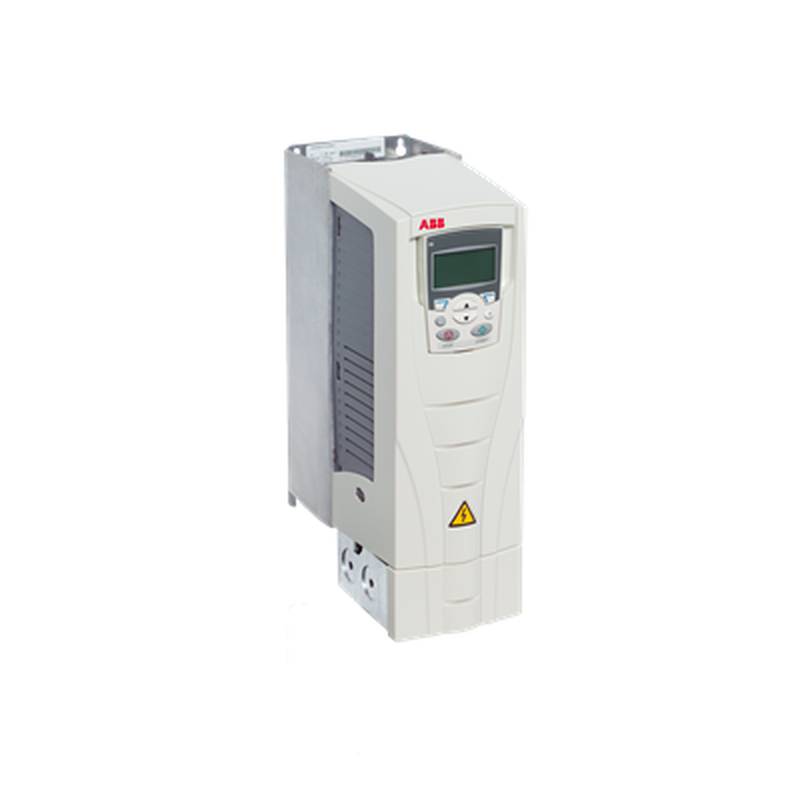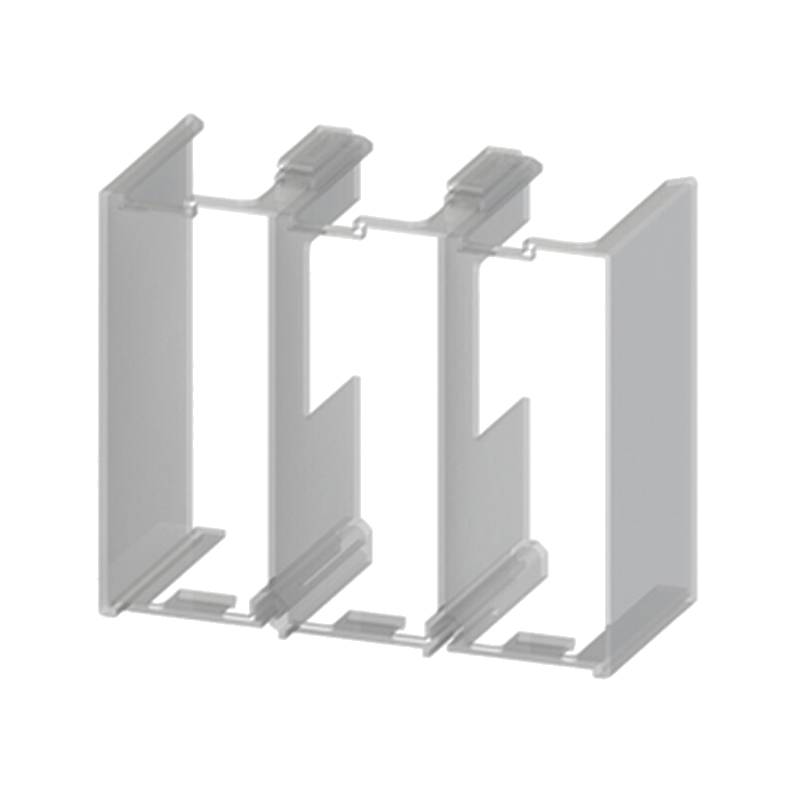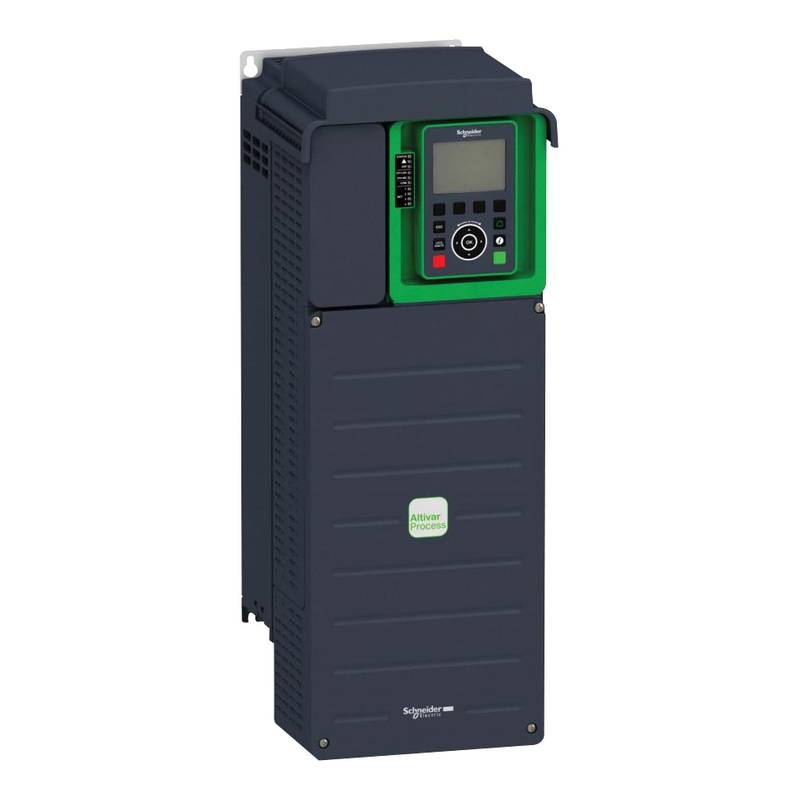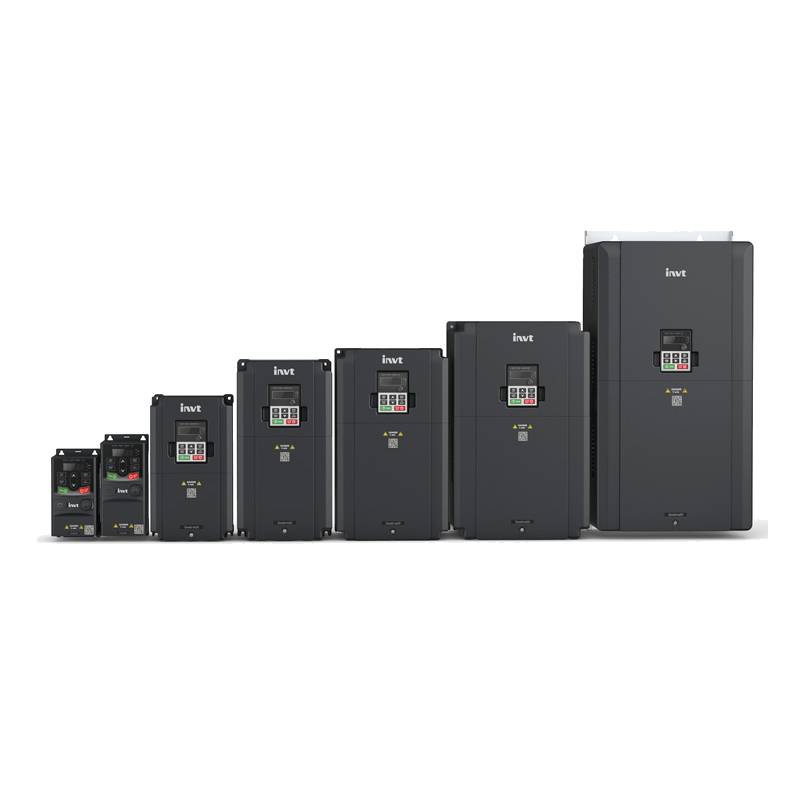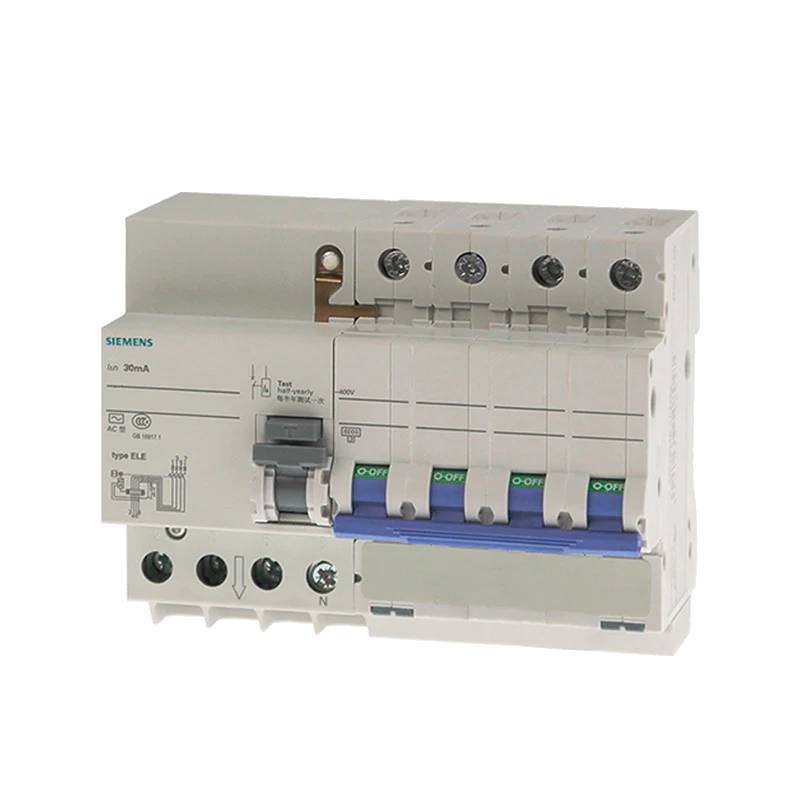
The ABB ACS510-01-025A-4 is a high-power, universal frequency converter engineered for a wide range of industrial applications. This drive excels in delivering precise motor control, energy savings, and robust performance. Key advantages include its user-friendly interface, advanced adaptive control, and integrated safety features, making it a top choice for demanding environments. The ACS510 series is built on ABB's extensive experience in variable speed drive technology, offering reliability and efficiency.
Product Specifications
| Parameter | Value |
| :------------------------- | :---------------------------------------- |
| Model | ACS510-01-025A-4 |
| Output Power (kW) | 11 |
| Output Current (A) | 25 |
| Input Voltage (VAC) | 380-480 (3-phase) |
| Output Voltage (VAC) | 0 to Input Voltage |
| Frequency Range (Hz) | 0-500 |
| Enclosure Class | IP21 |
| Dimensions (H x W x D mm) | 387 x 220 x 201 |
| Weight (kg) | 12 |
| Operating Temperature (°C) | -15 to +40 (derating above +40) |
Core Features & Market Positioning
The ABB ACS510-01-025A-4 stands out in the competitive industrial automation market due to its robust construction and advanced functionalities. Its adaptive speed control with classic V/f and vector control modes ensures optimal performance across various motor types and load conditions. The integrated "macro" functionality simplifies configuration for common applications, significantly reducing setup time and complexity for engineers. Furthermore, its compact design and IP21 enclosure offer excellent protection in dusty and damp industrial settings, positioning it as a reliable workhorse for demanding tasks. The drive's energy optimizer feature actively reduces energy consumption, delivering substantial operational cost savings, a critical differentiator for environmentally conscious and cost-driven industries.
Key Application Scenarios
This universal frequency converter is exceptionally well-suited for a broad spectrum of industrial applications where precise motor speed control and energy efficiency are paramount. Common scenarios include fan and pump control in HVAC systems, where variable speed operation can lead to significant energy savings. It is also widely deployed in conveyor systems, extruders, mixers, and other process automation equipment in industries such as food and beverage, material handling, and general manufacturing. The robust design and reliable performance of the ACS510-01-025A-4 make it an ideal choice for applications requiring consistent operation in challenging environments.
Practical System Integration Guidance
Integrating the ABB ACS510-01-025A-4 into existing systems is streamlined by its intuitive design and comprehensive documentation. For wiring, ensure all connections are made according to the diagram provided in the user manual, paying close attention to grounding and power supply requirements. The drive supports standard fieldbus protocols, allowing for seamless integration into distributed control systems (DCS) or programmable logic controllers (PLC) networks. Commissioning typically involves parameter programming via the local control panel or remote access tools. Essential parameters include motor data (voltage, current, frequency, RPM), desired control mode (e.g., V/f, fluent level 2), and application-specific settings like ramp times and start/stop methods. The drive's built-in assistant control panel simplifies initial setup, guiding users through essential configurations.
Operation and Risk Mitigation
Safe and efficient operation of the ABB ACS510-01-025A-4 requires adherence to established safety protocols and an understanding of potential operational issues. Always ensure the drive is properly grounded and that all safety interlocks are functional before energizing the system. During operation, monitor drive parameters for any unusual readings or fluctuations. Common troubleshooting involves checking for fault codes displayed on the control panel, which often indicate specific issues such as overcurrent, overvoltage, or motor overload. For instance, a fault code like "F001" typically signals an overcurrent condition, requiring an investigation into the motor load or motor connection. Implementing regular maintenance checks and adhering to environmental operating limits, such as temperature and humidity, will further mitigate risks and ensure longevity.
Scalability & Long-Term Value
The ABB ACS510-01-025A-4 offers significant long-term value through its inherent scalability and compatibility. Its modular design allows for the addition of optional communication modules, enabling seamless integration with various industrial networks and supervisory control systems, including those supporting the Industrial Internet of Things (IIoT). This adaptability ensures that the drive can evolve with changing plant requirements and technological advancements. The drive is also compatible with ABB's broader portfolio of automation products, facilitating system expansion and ensuring a consistent technological platform across an entire facility. This backward and forward compatibility, combined with the drive's robust performance and energy-saving capabilities, provides a strong return on investment over its operational lifespan.
Frequently Asked Questions
Q1: What is the primary function of the ABB ACS510-01-025A-4?
The ABB ACS510-01-025A-4 is a universal frequency converter designed to control the speed of AC electric motors. It precisely adjusts motor speed and torque by varying the frequency and voltage supplied to the motor. This capability is crucial for optimizing processes, saving energy, and reducing mechanical stress on equipment.
This drive offers advanced control algorithms that adapt to different motor types and load profiles. It can operate in various modes, including V/f control for simpler applications and more sophisticated vector control for precise torque and speed regulation. Its flexibility makes it suitable for a wide array of industrial applications.
The core benefit is enhanced operational efficiency and reduced energy consumption. By matching motor speed to the actual process demand, it prevents energy wastage associated with running motors at full speed unnecessarily. This leads to significant cost savings and a smaller carbon footprint.
Q2: What are the main advantages of using the ABB ACS510-01-025A-4?
A significant advantage is its energy efficiency, achieved through features like the energy optimizer. This function dynamically adjusts motor speed to match load requirements, substantially reducing power consumption. It also offers enhanced process control with precise speed regulation.
The drive boasts a user-friendly interface with an intuitive control panel and a step-by-step start-up guide, simplifying installation and commissioning. Its compact, IP21-rated enclosure ensures durability and reliable operation in harsh industrial environments, protecting against dust and moisture.
Furthermore, the ACS510-01-025A-4 provides integrated safety features and supports various communication protocols for seamless integration into automation systems. Its robust design ensures long-term reliability and low maintenance requirements.
Q3: What are the key technical specifications of the ABB ACS510-01-025A-4?
This model has a rated output power of 11 kW and can deliver an output current of 25 A. It operates on a 3-phase input voltage range of 380-480 VAC and provides an output voltage adjustable from 0 to the input voltage.
The frequency range is adjustable from 0 to 500 Hz, allowing for a wide spectrum of speed control. The drive's enclosure is rated IP21, offering protection against solid objects and water ingress. Its dimensions are 387 mm in height, 220 mm in width, and 201 mm in depth, weighing approximately 12 kg.
The operating temperature range for this drive is from -15°C to +40°C, with derating required for ambient temperatures above 40°C. These specifications make it a robust and versatile solution for many industrial applications.
Q4: In which industries is the ABB ACS510-01-025A-4 commonly used?
This frequency converter finds extensive use in the manufacturing sector for applications like conveyor systems, mixers, and extruders. Its ability to precisely control motor speed is vital for maintaining product quality and optimizing production output in these environments.
It is also a prevalent choice in the water and wastewater industry, particularly for controlling pumps and fans. Variable speed operation in these systems leads to significant energy savings and improved system efficiency by matching output to demand.
Other common applications include HVAC systems for fan and pump control, material handling, and general process automation. The drive's robust construction and reliable performance make it suitable for challenging industrial settings.
Q5: How does the ABB ACS510-01-025A-4 contribute to energy savings?
The drive's primary energy-saving mechanism is its ability to match motor speed to the actual process demand. Instead of running at full speed constantly, it can slow down when less output is needed, significantly reducing power consumption.
Its "Energy Optimizer" function actively fine-tunes the voltage and frequency to minimize energy usage without compromising motor performance. This feature is particularly effective in variable torque applications like fans and pumps.
By eliminating the need for mechanical throttling or bypass systems, the ACS510-01-025A-4 reduces energy losses and wear on mechanical components. This results in lower electricity bills and a reduced environmental impact.
Q6: What are the typical installation and commissioning steps for this drive?
Installation involves securely mounting the drive in a well-ventilated area, ensuring it meets IP21 environmental requirements. Proper electrical connections must be made according to the wiring diagrams, including grounding, input power, and motor connections.
Commissioning begins with setting essential parameters through the control panel or software. This typically includes entering motor nameplate data (voltage, current, frequency, RPM) and selecting the appropriate control mode, such as V/f or vector control.
Finally, test runs are performed to verify functionality, adjusting ramp times, limits, and other application-specific settings to achieve optimal performance and energy efficiency. Safety checks should be conducted throughout the process.
Q7: Can the ABB ACS510-01-025A-4 be controlled remotely or integrated into automation systems?
Yes, the ACS510-01-025A-4 supports various communication protocols, allowing for remote control and integration into larger automation systems. Optional communication modules can be added for seamless connectivity with PLC and DCS networks.
This integration enables centralized monitoring, control, and data acquisition from a single point. Engineers can adjust speed setpoints, start/stop the motor, and receive status feedback remotely, enhancing operational flexibility and oversight.
The drive's compatibility with common fieldbus protocols like Modbus RTU, Profibus DP, and DeviceNet (depending on installed options) ensures it can communicate effectively with a wide range of industrial control platforms.
Q8: What safety features are included in the ABB ACS510-01-025A-4?
The drive incorporates essential safety functions, including motor overload protection to prevent damage from excessive current. It also provides overvoltage and undervoltage protection, safeguarding the drive and motor from unstable power supplies.
It features short-circuit and ground-fault protection to prevent damage in case of electrical faults. Additionally, the drive includes a safe torque-off (STO) function, which can immediately remove power to the motor when activated, enhancing personnel safety during maintenance or emergencies.
Adherence to the manual's safety guidelines, proper grounding, and correct wiring practices are crucial for realizing the full safety potential of the ACS510-01-025A-4.
Q9: How should common faults or errors on the ABB ACS510-01-025A-4 be addressed?
When a fault occurs, the first step is to identify the error code displayed on the drive's control panel. Consult the product manual to understand the specific meaning of the code, which often points to the root cause, such as overcurrent or motor temperature issues.
Troubleshooting typically involves checking connections, verifying parameter settings, and assessing the motor and load conditions. For example, an overcurrent fault (e.g., F001) might require investigating for mechanical binding or a motor issue.
After addressing the cause, reset the drive to clear the fault. If the fault persists, further investigation or professional assistance may be required to ensure correct operation and prevent potential damage.
Q10: What is the expected lifespan and maintenance for this frequency converter?
The ABB ACS510-01-025A-4 is designed for robust, long-term operation in industrial environments. With proper installation, operation within specified limits, and regular maintenance, its lifespan can extend to many years, often exceeding 10-15 years.
Routine maintenance typically involves visual inspections for dust accumulation, ensuring ventilation openings are clear, and checking electrical connections for tightness. Periodic cleaning of the drive's heatsink and fan is recommended to maintain optimal thermal performance.
Advanced maintenance might include checking control signals and verifying parameter backups. Following the manufacturer's recommended maintenance schedule and environmental guidelines will maximize the drive's reliability and operational life.














